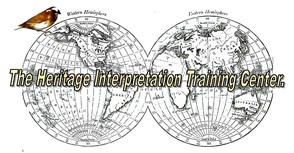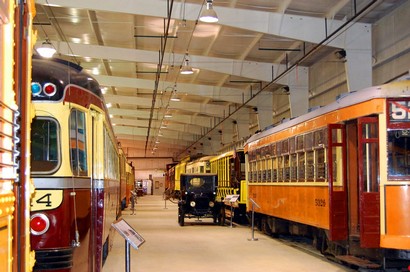John Veverka & Associates
Main menu:
- Home Page
- Our Range of Services
- Interpretive Coaching
- Interpretive Planning
- Interpretive Plan Outline
- Interpretive Training
- John Veverka Resume
- NEW Advanced Interp. Text Book
- InterpNEWS
- Library
- JVA NEWS, Courses and Updates
- Certificates
- Planning/Design of Interpretive Panels
- Interpretive Writing
- Interpretive Writing Course
- Interpretive Trails Course
- Interpretive Panels Course
- Introduction to Heritage Interpretation Course
- Interpretive Planning & Design of Marketing Brochures Course
- Training for Interp. Trainers
- Interpretive Exhibits Course
- Interpretive Master Planning Course
- Interpretive Planning for Scenic Byways.
- Critiquing and Coaching Interpretive Staff
- Advanced Interpretive Planning
- Interpretive Training Center Course Catalogue
- Interp. for International Visitors course.
- Interpretive Exhibits Evaluation
- Interp. Center Feasibility Analysis Course.
- Interp. for Commercial Tour Providers
- Interpretive Researchers Guide for Visitor Studies
- Interp. Planning for Historic Homes
- Heritage Interpretation Training Center
- Interpretive Planning for Botanical Gardens
- An introduction to planning and presenting live interpretive programs and tours for Museum/Heritage Site Docents and Volunteers.
- Developing Marketing Plans for Heritage & Tourism Sites and Attractions
- Interpretation Book Store
- Heritage Interpretation Resource Center
- Interpretive Planning for Historic Farms
- Developing Successful Partnerships
- Developing Interpretive Outreach Programs
- Community Interpretation Planning
- Interpreting Gravestones and Historic Cemeteries
- Using Interpretation to Accomplish Management Objectives.
- An Interpreters Guide for Survival Economics.
- Innovative Strategies for Interpretive Media and Services Planning.
- A Curators Guide for Developing Gallery Tours.
- Advanced Interpretive Writing - Technical Publications
- Advanced Interpretive Services for Managers, Supervisors, Team Leaders and Sr. Staff.
- Advanced Interpretation for Chiefs of Interp. - Interpretive Managers - Regional Interp. Specialists
- Interpreting Critical Issues.
- Developing Commercial Interpretation for Resorts, Cruise Ships, Campgrounds and Tourism Attractions.
- Planning and developing a new commercial tour guiding business.
- Interpretive Evaluation, Visitor Studies and Site Assessment Center
- The Center for Interpretive Planning Advancement & Excellence.
- Developing Requests for Proposals (RFPs)
- Planning and Facilitating Focus Workshops
- Planning for Interpretive Experiences
- 40 Years a Heritage Interpreter
- Interpretive Techniques - The Rest of the Story Course
- Certified Professional Interpretive Planner Certificate
- Certified Professional Interpretive Program
- Certified Professional Interpretive Writer certificate program.
- Visitor motives for attending interpretive programs.
- Exhibit Rehab Course
- Developing Training Workbooks & Manuals
- Planning for Railroad Museums and Sites.
- Climate Change Interpretation Course.
- When there's nothing left but the story - interp. storytelling.
- Interpreting Legends Myths and Fables
- InterpSHARE - Seminars 2022
- Interpreting Invasive Species
- Interpretiing Edible Insects
- Interpretaive Planning for Climate Change
- HITC Climate Crisis Resource Center
- PUP Members Only
- Starting a new Interp Consulting Business
- Panels 4 Week Course
- Interpretive Writing - 4 Week Course
- Marketing - 4 Week Course
- Intro to Interpretation - 4 Week Course
- Interp Climate Change - 4 Week Course
- Exhibit Rehab 4-Week Course
- Level 1
- Johns Interpreters Blog
- John Interpreters Blog 2
Planning for Railroad Museums and Sites.

Developing Interpretive Plans for
Railroad Museums, Depots and Other
Railroad Interpretive Experiences.
(PA Trolley Museum)
13 Units - 3 CEU credits
$300.00 USD
I love railroad heritage sites and history ever sense years ago I had a contract to do an inventory and analysis of all the RR heritage sites in Ohio. Saw everything from a one-coach outdoor display to depots and even on to seasonal train ride experiences. Even did training for staff at a Trolley Museum in PA. Working in the UK for years, I took the trains everywhere in the UK to meet with clients.
As we've had a number of requests for proposals for RR relates sites, I thought putting together a new course on how we do our RR Heritage Site Interpretive Plans, especially to help the many volunteer groups who want to develop an interpretive plan to help with grant writing. As with all of our courses you can start the course at any time and work on the course at your own pace. You can even work on this course as a team of participants working on a RR Heritage Project.
Tuition includes our Interpretive Planning e-Textbook, handout materials, Completed Interpretive Plan for references, and, as an e-LIVE course, chatting with the course instructor as needed by phone, e-mail or SKYPE. The course instructor will walk you through your interpretive planning project.
Course Units/Content
Unit One - Project Needs Assessment. For this first unit we need to determine what your planning project will cover or involve. Will the plan be for a depot museum, outdoor displays of trains and engines, live RR ride experiences, or larger more formal railroad museums? This needs assessment will help us determine just what kind of interpretive plan you will need - i.e. Scope of Work for your planning.
Unit Two - Review of the Model of Interpretive Planning. We start all interpretive planning courses with an introduction and review of all the steps involved in developing an interpretive plan for any interpretive site or resource. Based on the content of the model the rest of the planning process will follow the steps in the planning model. This unit also includes a general outline for content and organization of your interpretive planning project.
Unit Three - Focus workshop/theme, sub-themes and objectives. This part of the plan focuses on what you want the total interpretation for your project to illustrate (main theme) and accomplish (learning, behavioral and emotional objectives).
Unit Four - Developing your story line outline. What topics and topics, based on your theme and objectives, will you offer, and how will the topics be linked to your sub-themes and main interpretive theme?
Unit Five - Your market analysis. Who are your current market groups?
What market groups do you want to add? What are the kinds of experiences you feel that your visitors want that you're not offering? How will you customize exhibits, programs or activities based on existing or future market groups?
Unit Six - Resource analysis and inventory. This part of the planning course is where we work to focus on your project. Will the plan be for a depot museum and exhibits, outdoor exhibits, live guided programs, formal larger museum exhibitions, or total site (including everything) interpretive planning.
Unit Seven - Story Development Planning Form Sets. Based on your resource analysis, this is the longest part of interpretive planning. Here we (you) figure out exactly where and how you want to do interpretive improvements, develop new interpretive sites or opportunities, develop or upgrade new exhibits, and just what interpretive media you will want to add to your site interpretation. A copy of a completed interpretive plan will be provided as a guide as well.
Unit Eight - Implementation and Phasing Matrix. After your plan is completed (all your planning form sets and media needs determined) you have to have $$ to pay for everything. So the matrix is where you post what each of the individual planning form sites will cost, and when you want to phase in (fund or write a grant for) that media mix or options. Samples of Implementation and Phasing matrices will be provided as well a current media costs for budgeting.
Unit Nine - Evaluation and Pre-testing. This last formal unit is for you to consider how, when and where you will do evaluations, such as pre-testing exhibit panels or label copy, to be sure your objectives for that media are being accomplished. I like to be sure that you address your evaluation strategy so you don't forget how important this is for the long-term success in achieving the objectives of your interpretive plan and your agency/organization mission.
Unit Ten - Your Final project - your interpretive master plan draft (if you are working on an actual interpretive planning project) or interpretive planning outline/check- list if you will be working on a
interpretive plan in the future.
Estimated time to complete this course is 48 hours+, but you can take your time if you are working on a planning project using the course as your guide. FYI - the average time to do an interpretive master plan for an average park, historic site, nature center, etc. is about 30 days - spread out over about 3 months allowing for research, reviewing drafts and then the final document.